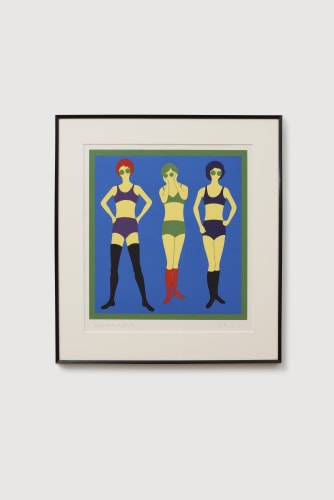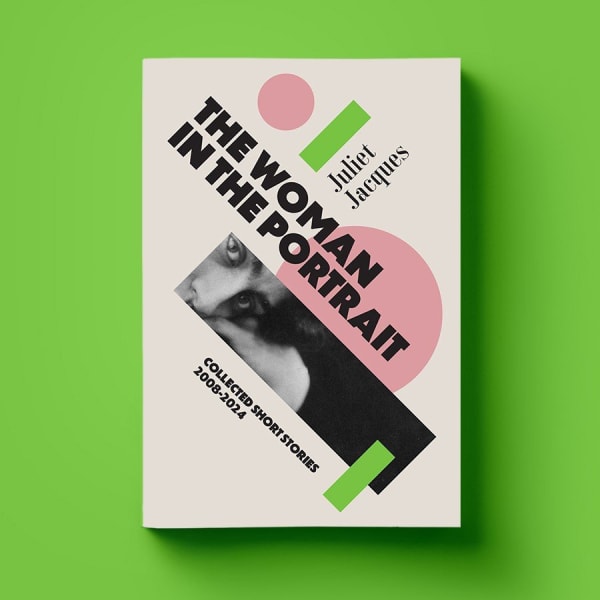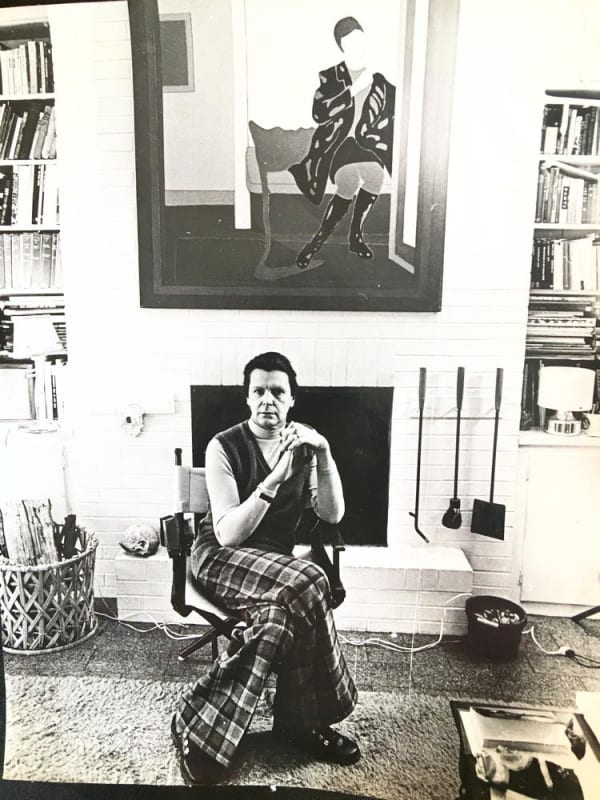Erica Rutherford: The Human Comedy
"The performance of gender, how it is enacted, is an ongoing act of improvisation within a scene of constraint."
— Judith Butler, Undoing Gender, 2004
Richard Saltoun Gallery presents a comprehensive exhibition dedicated to British-Canadian artist Erica RUTHERFORD (1923–2008), one of the first openly transgender British artists.
The exhibition marks the first UK survey of Rutherford’s work, following her inclusion in this year’s Venice Biennale, the major museum exhibition Women in Revolt! (Tate Britain; National Galleries of Scotland, 2024/25), and her touring retrospective in Canada (Confederation Centre Art Gallery, Charlottetown; touring 2024/25), where she lived and worked for most of her life.
The show spans paintings and works on paper from the 1970s to the 1990s, with a particular emphasis on her later series, The Human Comedy.
Exhibited are two significant earlier bodies of work from the 1970s: her self-portraits and abstract landscapes, both of which reflect Rutherford’s personal journey of transitioning and the impact of this experience on her evolving artistic practice.
The self-portraits are characterised by faceless, abstracted figures set against bright, monochromatic fields. These works serve as visual meditations on the fluidity of gender identity, produced whilst Rutherford was undergoing her gender transition. Having lived most of her life as Eric Rutherford, she began her transition in the early 1970s after moving to Canada, culminating in gender reassignment surgery in 1976. In her autobiography entitled Nine Lives, published in 1993, she chronicles this experience in detail, describing how “changing from a man to a woman” brought her “face to face with the humiliations of being treated daily as an inferior”.
These self-portraits engage with themes of anonymity and transformation, presenting the artist as a figure in flux—depersonalised, faceless, and fragmented, yet saturated in bold, Pop Art colours. By employing the visual language of Pop Art, Rutherford reflects critically on the mass media’s portrayal of identity, using its stylized forms to explore the performative and socially constructed nature of gender. These works are both personal reflections on her transition and broader statements on the societal pressures that shape identity.
The artist’s abstract landscapes similarly explore themes of identity, but through the lens of external, rather than internal, environments. Painted in a hard-edged, graphic style, these landscapes evoke a sense of emotional and psychological dislocation. While visually engaging, with their bold, flat planes of colour, they are devoid of recognizable landmarks, functioning as abstract, mental landscapes rather than representations of specific places. Much like her self-portraits, these landscapes reflect her internal journey, suggesting a world in transition—one that echoes the artist’s own experience of reflection and redefining herself.
Her later still lifes from the 1980s introduce a shift towards a more decorative and representational style, as well as a turn to more domestic themes. Yet, beneath the surface of these seemingly benign compositions lies a continued interrogation of belonging and identity. The vibrancy of her palette and the stylization of everyday objects suggest an engagement with the commodification of femininity and the artist's lived experience of navigating societal expectations.
The focal point of the exhibition is Rutherford’s expansive 1990s series, The Human Comedy, a body of work produced two decades after the artist completed her transition, that captures her return to figuration in a manner that fuses the theatrical with the tragicomic. Comprising large-scale, ritualistic and narrative-driven compositions, this series is suffused with allegorical content, positioning human existence as a series of absurd and often grotesque tableaux. Set within barren landscapes reminiscent of dream-like Surrealist works, Rutherford’s paintings are populated by androgynous human figures, animals, and strange hybrids of the two, enacting a characteristic fluidity of gender.
The artist employs exaggerated forms, saturated colours, and dark humour to convey her observations of the human condition—one marked by alienation, bursts of euphoria, and mainly, absurdity. The works are infused with a theatricality that reflects Rutherford’s own background in theatre, amplifying the sense of spectacle and highlighting the often ridiculous, performative aspects of existence.
As art writer Ray Cronin noted in his essay for Rutherford’s 1998 exhibition dedicated to this series at the Confederation Centre Art Gallery, The Human Comedy paintings “do not hope or foretell”, but instead reflect on humanity’s disconnection from nature and its own constructed identity. Rutherford’s experience living across the gender binary deeply permeates these paintings, with the human figures—often depicted in masks, and at conflict with other beings from the natural world —mirror her own navigation of identity in a society that is structured around rigid categories of belonging. Crucially, in this series, identity is not portrayed as a coherent or singular condition, but instead constitutes an ongoing relational process with nature’s diverse community of sentient beings.
Erica Rutherford’s work remains a crucial contribution to the discourses of gender, identity, and representation. This exhibition at Richard Saltoun Gallery reaffirms the lasting significance of her practice, both within the history of transgender representation and in shaping broader narratives in contemporary art.























